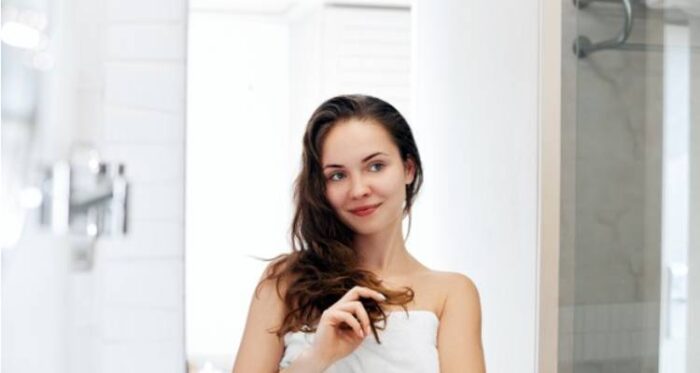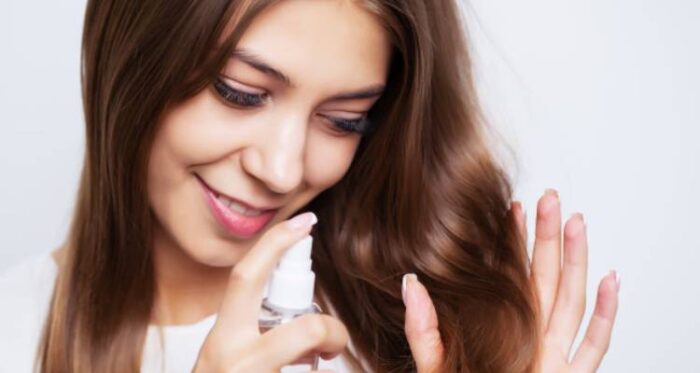Using Conditioner Before Shampoo
The presence of a lot of hair products near the bathtub is ubiquitous. These products include different shampoo like clarifying shampoo, volumizing shampoo, smoothing shampoo, shampoo for colored hair, alcohol and sulfate-free shampoo, and all of these shampoo play their parts according to their specialty.
Besides these products, conditioner is the essential hair product. Different types of conditioners, including rinse out conditioner, leave in conditioner, hair mask, and deep conditioner. Don’t panic; you don’t need all of these products. Pick the right one and free your mind from collecting all the hair products from a shop.
However, conditioner before the shampoo will cause hair problems
Generally use of conditioner before shampoo, we wash our hair in a sequence: shampoo, then rinse it with water, conditioner, and rinse, but when we reverse the order line means we apply conditioner before shampoo is also beneficial but to understand this it is better to know about the function of shampoo and a conditioner.
The shampoo is used to remove hair from excess oil, chemical build-ups, and dead skin cells, especially on the scalp and roots. The conditioner is intended to help preserve and soft threads, plus moisture lock. Conditioning your hair before shampooing makes it shinier and lustrous. This makes cleaner with more rigorous preparation and handwashing. It allows the shampoo to remain longer in the hair and become more diluted.
Benefits of conditioning before shampoo

It has been found, by research, that the method of reverse washing allows the product to be applied to damaged and flattened hair to minimize the adverse effects of the product; before washing, using a conditioner coats the hair cuticles with protection. The coating that was left on your hair serves like a primer until it is rinsed.
This coating is helpful in spreading the shampoo. This shampoo will strip the greasiness of the conditioner, but its intense nourishing qualities will remain.
Involves in the removal of product’s chemicals
The conditioner is thicker than shampoo. Even while it hydrates the threads, it may weigh them down as well. This is certainly relevant for those with elegant braids. It would help wash away any extra chemical accumulation that can leave your strands looking dead using shampoo after conditioner. Your hair would be as bulky as it has ever been.
It gives additional nourishment to hair
Shampoo drains the scalp of its natural oils. When you first use the conditioner, a protective coating is applied to keep this from emerging. This makes your scalp hydrated and nourished. It is said that reverse washing is more useful for those with dry, damaged hair.
Shampoo first, then conditioner
As discussed earlier, the standard order of washing hair is to apply shampoo, wash it out with water, and then use a conditioner.
How to apply conditioner before shampoo

It is freaky to alter the order of your daily hair care routine, but it is not a thing which is impossible, so here are the steps to follow the reverse way.
Step 1
Stand under the shower with lukewarm water
The first of using conditioner before shampoo make sure water should be lukewarm water no matter what’s the order of washing hair. The hot water bath is always a favorite for females. Still, it will deprive the hair and scalp of essential oils, leading to dry hair and eventually even contributing to damages. So, your safest choice is turning down the dial to lukewarm temperature any time you wash your hair.
Step 2
Drench your hair
Thoroughly saturate your hair with water before you add your conditioner, or deep conditioner. It’s time to apply your conditioner until your hair is completely wet.
Step 3
Apply Conditioner
The third step of applying conditioner before shampoo you are now able to add the conditioner to your ends and lengths. To hold it on for the targeted period. Switch into other activities while the conditioner sits on your strands, then rinse out thoroughly.
Step 4
Shampoo
It is time to search for your shampoo after you have rinsed out the conditioner. It will just maintain a normal condition of hair, concentrating on your roots. Then thoroughly rinse it off.
Conditioner
- Works as a primer before washing.
- Spread the shampoo uniformly.
- Protects the hair strand to keep the shampoo from stripping the hair from its natural oils.
[READ PERFECT HAIR HEALTH]
What are the drawbacks of reverse washing?
Reverse-washing of your hair process might take a lot of experimentation. If you wish to go with these items, you would need to see the ones that work better on your hair, how much of each product to use, and where you will apply it. This can make you look dirty for a few days, if not weeks.
There aren’t many drawbacks to hair quality when doing reverse hair washing. Some people feel that taking a shower is unnecessary. They do not particularly feel the sensation of dirt on their scalp from their hair.
Shampoo first, then conditioner
Before adding conditioners, most individuals add shampoo to their scalp, clean, and rinse. Dirt and oil are eliminated from the hair by shampooing, making hair dry, bushy, and unsustainable. This dilemma is believed to be helped by the use of conditioner after bathing with shampoo.
How to use conditioner after shampoo
The general advice is to use shampoo before conditioner to cleanse the hair. For the best results, follow these steps:
- Saturate your hair absolutely with soft, lukewarm water.
- Squirt into the palm of your hand a little amount of shampoo.
- Apply it to the scalp and rub unless it starts foaming.
- Gently rub your hair with the shampoo, but pay most attention to the scalp.
- Thoroughly shampoo your hair and scalp.
- Squirt a tiny drop of conditioner into your palm.
- Avoiding the scalp, massage it to your hair’s length.
- Keep the conditioner for 3 minutes.
- Thoroughly rinse your hair.
- Gently dab a towel on your hair after leaving the tub to remove moisture.
Should we wash hair after applying conditioner?
The second stage of hair washing is usually the conditioner. To make hair smooth and resilient, conditioners include fatty alcohols, moisturizers, and oils. Some have protein, and some have thickening agents to make the hair appear fuller to bind broken ends briefly.
So washing your hair after applying conditioner is good. Still, there are leave-in conditioners available in the market that are made specifically to be not rinsed off and are made with moderately lighter ingredients rather than typical conditioner.
[READ 7 MOST COMMON STAGES OF HAIR LOSS]
Side effects of conditioner

Conditioners with few side effects are safest.
To minimize acne development, comb your hair up with a hairband or claw, then add conditioner to keep it off your face.
While it is rare, reactions can occur when using products that have cause irritation to the scalp. The main danger of ingesting this substance is that it could touch your eyes or nose and cause a slight burning sensation.
Coconut oil as a conditioner before shampoo
You may use coconut oil as conditioner before using shampoo. Jojoba oil, avocado oil, coconut oil, and almond oil are common substitutes for conditioners. Many of these are nutritious and are worth trying if you love the taste of natural alternatives.
The advantage is the decrease in sensitivity to dyes and fragrances. The disadvantage is that your hair could be greasier or thicker. Oils help to condition the hair deeply.
Try an oil on a hair for a week or more.
Ensure that you are reading labels correctly to show that the oil you are buying is 100 percent pure.
Conditioner without shampooing
Because of one’s hair’s dry texture, a shampoo may not be needed at all. This process may also be called co-washing. Shampooing your hair could be smoother on hair than regular shampooing, particularly hair that is already likely to get damaged.
However, it can cause a lot of excess product to be left on the hair. It is using a clarifying shampoo every two weeks to flush out the built-up hair. Even though it’s low risk, it’s still worthwhile and exciting to try.
How to combine shampoo and conditioner in a single bottle
This is a shampoo that is made with conditioner. Often good results can be achieved by using the 2-in-1 shampoo formula.
While it’s successful, it is hard for this shampoo to be useful because it does the opposite of conditioner, which works to clean hair. With advancements in technology, it is sometimes possible to speed up the regeneration process and get the hair’s natural chemistry.
Historically, this substance has been almost like a gel. Although this is not ideal for hair, many consumers have been using it to wash their hair. Although these goods are not the only kind available, they are discussed more below.
- If you like to use 2-in-1 shampoo and conditioner…
- Wet your hair thoroughly and adequately.
- Apply the hair product to the entire length of your hair, from top to bottom.
- Rinse your hair with water.
- Your hair should feel clean at the end of the process but still a bit fuzzy.
[READ LEG HAIR LOSS]
How to use a deep conditioner?
As a recommendation, deep conditioner can be useful for hair that is bleached, dyed, permed, or styled with hot rollers. When using these practices, the hair can potentially become affected.
It would help if you only used a deep conditioner once a week.
To use the deep conditioner
Please read the label’s instructions to decide whether it needs to be wet or dry before applying to the hair.
- As a recommendation, apply conditioner over the ends of your hair.
- Wash out the conditioner.
- The unit should remain on for the amount of time listed on the product labelling, from 10 to 30 minutes.
